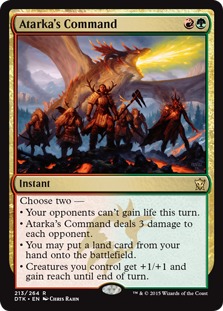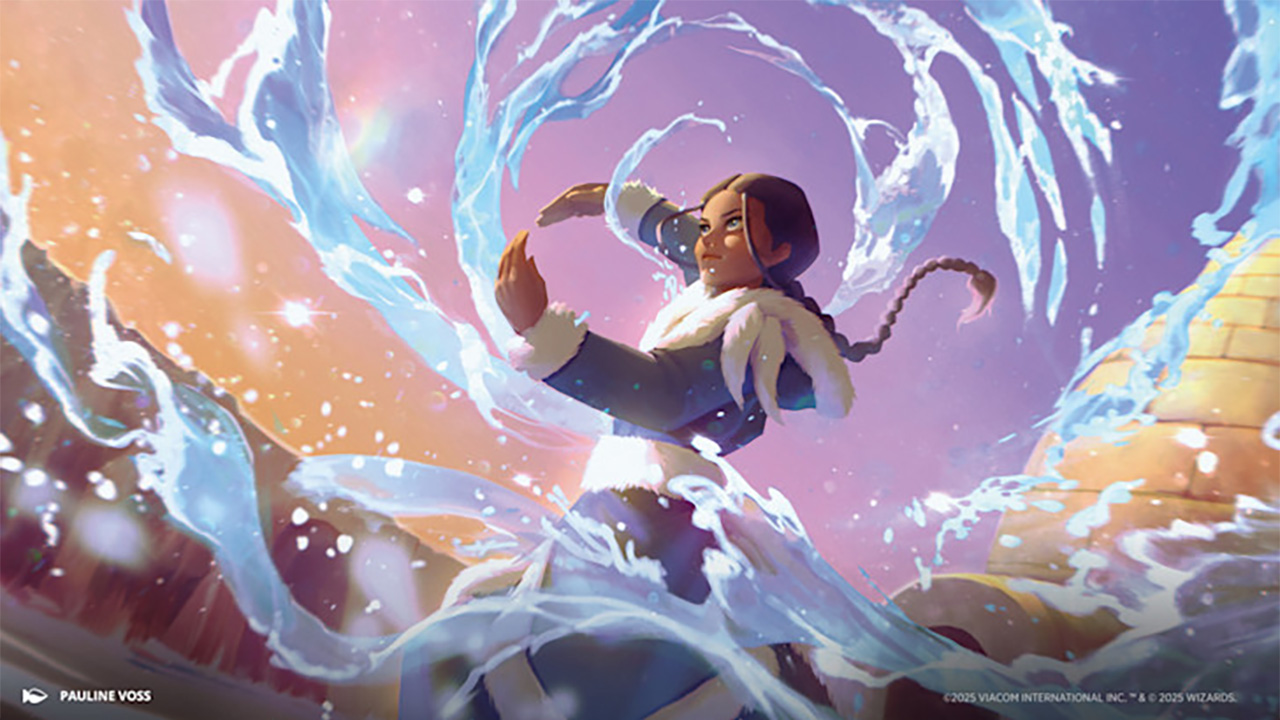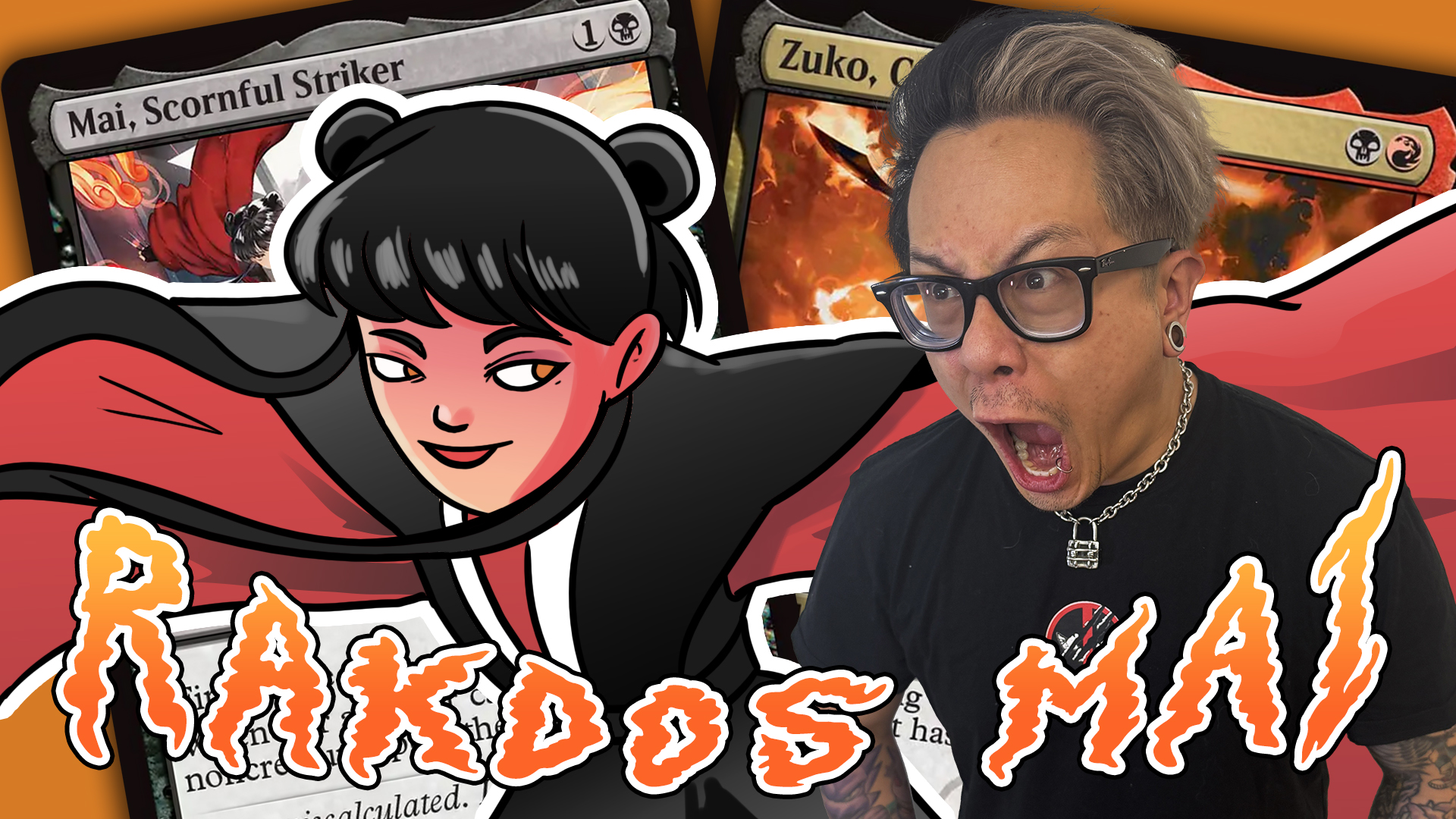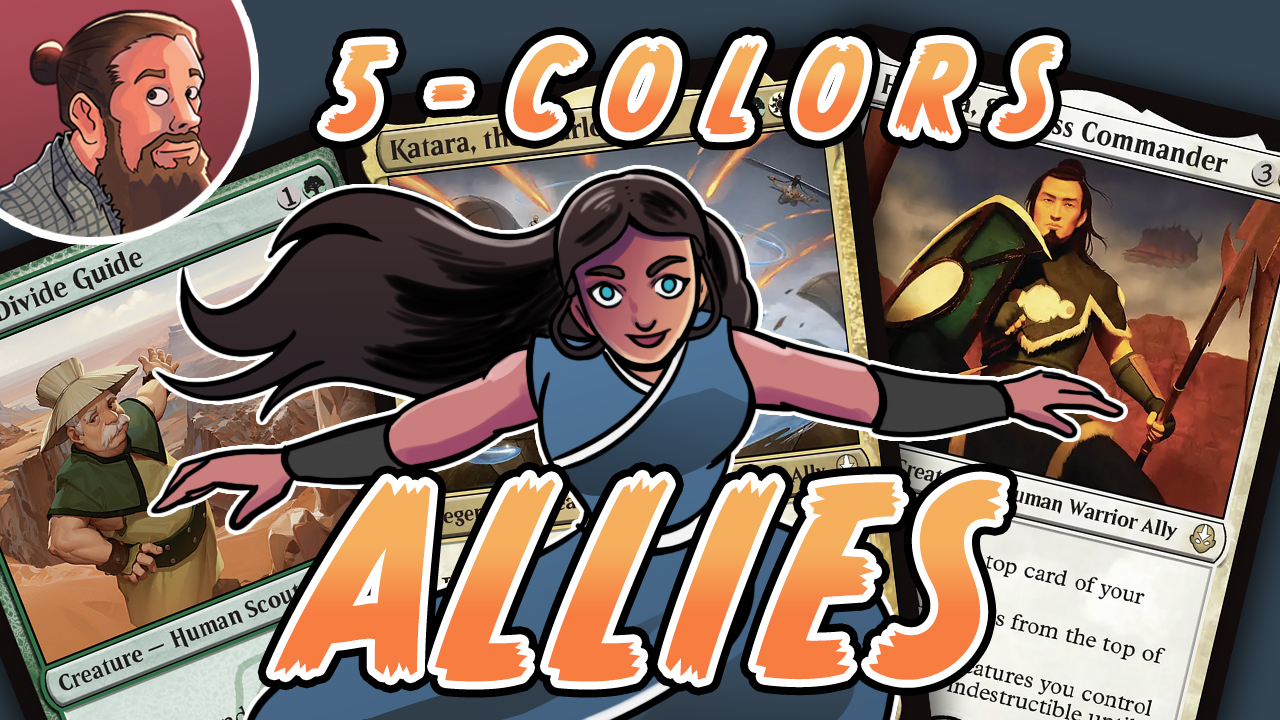"Choose One": A Brief History of Modal Spells (Exclusive Battlebond Preview)
Sea God's Revenge isn't a great Magic card. While it's fine in limited, it's not the type of card that usually shows up in constructed decks. The same is true of Lost in the Mist and Contradict—even with upside, five mana is simply a lot for a counterspell. Jace's Ingenuity, on the other hand, is a fine Magic card. Control decks might have played a copy or two when it was legal in Standard, since instant-speed card draw is always at a premium in control decks, but it's still just a random uncommon and fairly close to replacement level.
One thing that Magic players learn quickly is that having options is a good thing. The more choices you give yourself, the more opportunities you have to make good choices, outplay your opponent, and win games. So, what happens if we take Sea God's Revenge, Contradict, and Jace's Ingenuity—three cards that fall somewhere between unplayable and replacement level in terms of competitive Magic—and mash them all together into one card? You have a card that's not only very strong, but getting a reprint in Battlebond (big thanks to Wizards for giving us a sweet preview card): Mystic Confluence.

Mystic Confluence, returning in Battlebond, is a great example of how a bunch of not-that-powerful options become extremely powerful when you are given choice and flexibility. While bouncing three creatures isn't great for five mana, countering a spell isn't great for five mana, and drawing three cards is only okay at five mana, the fact that you can do things like counter a spell and draw two cards, bounce a creature and draw two cards, or bounce two creatures and counter a spell makes it so the sum of Mystic Confluence is much more powerful than its individual parts.
The three choices and flexibility that Mystic Confluence offers mean that it's almost never bad. The floor on Mystic Confluence is drawing three cards—essentially a Jace's Ingenuity—while the ceiling is a three-for-one when you can Mana Leak an important spell, bounce one of your opponent's creatures (or even your own Snapcaster Mage), and draw a card along the way for good measure.
As far as playability, Mystic Confluence only really sees play in Commander, although it's a true staple in the format, coming in at among the top 50 blue cards in the format according to EDHREC. It's also possible that getting more copies into the wild might make it even more popular—while it isn't super expensive at the moment, at about $10, it's not exactly cheap either, especially for budget-conscious Commander players. Pretty much any somewhat controlling blue deck wants Mystic Confluence, as do spellslinger decks. The card just offers so much value and flexibility that, if you can cast it reliably, you'll rarely be sorry to have it in your deck. Since there isn't really a whole lot more to say about playing Mystic Confluence (again, if you're playing blue in Commander, stick a copy in your deck—you won't be sorry), let's instead take a walk down memory lane and look at the history of flexible "choose one" modal spells in Magic.
Mirage / Visions: Original Charms


Technically, "choose one" modal cards have been part of Magic since Alpha, with Blue Elemental Blast, Red Elemental Blast, and Healing Salve blazing the modal trail. However, it took until Mirage for us to get a full cycle of these cards with the charms. This cycle formed the framework for all of the charms to come afterward, featuring three modes and allowing you to pick whichever best suits your needs in a specific situation. The unique aspect of the original charms is that they all just cost a single mana, so their power level suffered as a result. While I wasn't playing back in the Mirage / Visions days, the only two that have really stood the test of time are Funeral Charm (which shows up in Modern 8 Rack to this day) and, for a while, Vision Charm (which was used in Legacy as a way to cheat Phyrexian Dreadnought into play and to fight against Batterskull).
Planeshift: Tri-Colored Charms



After Mirage and Visions, charms went on a long hiatus. While the odd "choose one" card still appeared every now and then, it wasn't until Planeshift that the multiverse got another "choose one" cycle. This time, rather than being just a single mana, the charms required three mana of a specific shard (Grixis, Jund, Esper, Naya, and Bant). While keeping the same form as the original, where you get three options and get to pick which one suits you best in a given situation, the unique aspect of the Planeshift charms is that each option was tied to one of the colors. Take Crosis's Charm, for example. Returning a permanent to hand is a blue ability, destroying a non-black creature is a black ability, and blowing up an artifact is a red ability. Not only do the rest of the Planeshift charms follow this pattern, but this "ability for each color" trope remains in charms to this day.
Onslaught: Tribal Charms



For the sake of completion, we should probably mention the Onslaught charms, although they are extremely forgettable and generally pretty bad. Modeled after the original Mirage / Visions cycle, the Onslaught charms cost a single mana, although they do have a bit of a twist. Each Onslaught charm has some sort of tribal aspect. The tribal flavor is part of the reason why the Onslaught charms are among the worst "choose one" cards every printed. The reason that modal spells are powerful is that they offer flexibility, but because they have at least one (and sometimes more) ability that only works with a specific creature type, the Onslaught charms are much less flexible (and therefore less playable) than most of the other "choose one" spells printed throughout Magic's history. If you're playing Cleric or Soldier Commander, it might be worth considering the proper charm, but there otherwise isn't much to see here.
Mirrodin Block—Choose One (or Both!)



In Mirrodin block, the entwine mechanic allowed for an interesting new take on "choose one" modal cards. With cards like Tooth and Nail, you can pay the card's written mana cost and choose between two modes, or you can pay the entwined cost (basically a unique form of kicker), and rather than choosing one option, you get both! All of the entwined cards are mono-colored, but each color has several options split across the sets of the original Mirrodin block and across rarities. While many of the cards were at least somewhat playable, the standouts include Tooth and Nail (which was a Standard staple and sees fringe Modern play to this day), Promise of Power (which still shows up in black Commander decks, mostly because drawing five cards for five mana is a pretty great deal in a 40-life format), and Rude Awakening (which offered both combo potential thanks to the land-untapping ability and a way to close out the game by turning all of your lands into random 2/2 beaters). On the other hand, cards like Spectral Shift show that simply having options isn't enough to make a card playable; for a "choose one" modal card to be good, at least one of the options has to be a little bit desirable.
Planar Chaos—Color-Shifted Charms



Charms proper made another return in Planar Chaos, and while not exclusively one mana, the cycle is very reminiscent of the original charms from Mirage and Visions. However, in keeping with the flavor of the color-shifted set, the abilities on the Planar Chaos charms don't really line up with their colors. The best example of this is Piracy Charm, which is literally Funeral Charm except granting islandwalk rather than swampwalk. While each Planar Chaos charm has at least one ability that traditionally lines up with its slice of the color pie, each also gets at least one mode that is generally off-limits within its color, like the green Evolution Charm giving a creature flying or the white Dawn Charm countering a spell that targets you. Of the Planar Chaos cycle, Dawn Charm is the most powerful today, but Piracy Charm occasionally pops up in weird Snapcaster Mage decks to take advantage of the removal and instant-speed discard.
Lorwyn—Commands



Lorwyn was a game-changer for modal spells. Up until this point, charms and other modal spells typically relied on choosing one option, but Lorwyn upped the ante by allowing players to choose two of four different options on the iconic command cycle. The end result was one of the most powerful and playable cycles of non-land cards in Magic's history. Cryptic Command is a Modern staple, Primal Command is an archetype staple in Modern (for various green devotion decks and occasionally unique builds of Ponza), Profane Command and Austere Command are Commander all-stars, and Incendiary Command—clearly the worst of the bunch—still shows up in the Commander format from time to time.
What makes the command cycle so much better than the previous modal spell cycles? It's actually pretty simple: as we've been talking about throughout the article, the power of modal spells is in flexibility and options. While choosing one of three options is great, choosing two of four options is even better!
Shards of Alara—Charms



The charms of Shards of Alara are essentially an update of the Planeshift charms, following the same exact formula: one for each wedge, each containing three colors and with one ability for each color. While the growth of the Modern card pool has pushed most of these cards out of the format, there was a time when Jund Charm and Bant Charm were legitimate cards in the format. If you compare the Shards of Alara versions to the Planeshift versions, the newer charms win in just about every case, which is probably more of a testament to power creep and Wizards having several sets to figure out how to make good charms than anything else.
Return to Ravnica—Guild Charms



Return to Ravnica featured the next take on charms, and it was a good one. Rather than being a five-card cycle, there were 10 charms in Return to Ravnica block, one for each guild. The formula shifted a bit as well thanks to the two-color pairing, featuring one mode for each color and a third mode that falls into the color pie of both colors. A good example of this is Selesnya Charm, where pumping a creature and giving it trample is a green ability, exiling large creatures is a white ability, and making a token is both white and green. The end result was an extremely playable cycle. Most of the Return to Ravnica charms saw play in Standard, with some being staples (especially Azorius Charm and Selesnya Charm), while others (Golgari Charm and Izzet Charm) still make appearances in Modern from time to time.
The combination of the Shards of Alara and Return to Ravnica charms shows a huge shift in philosophy for "choose one" cards. In the early days of Magic, charms were more or less throwaway cards or replacement level, at best. Starting with Shards of Alara and continuing through present day, charms have evolved into some of the most playable and chase uncommons from their respective sets. At this point, the expectation is that whenever charms return (perhaps as early as our return to the plane of Ravnica this fall), they will be very good.
Khans of Tarkir—Wedge Charms



The Khans of Tarkir charms feature the long-awaited completion of the three-color pairings. Oddly, before Khans of Tarkir, shards had two different cycles of charms, while wedges has no charms at all. In keeping with the post-Shards of Alara trend, all of the Khans of Tarkir charms saw heavy play in Standard, with Abzan Charm leading the way (in part because Abzan was the best wedge for most of Khans Standard) and Jeskai Charm not far behind.
Dragons of Tarkir—Commands



By the end of Khans block, we had one more important addition to the modal-spell pantheon, with the multi-colored Command cycle. Similar to the Lorwyn commands, each of the Dragons of Tarkir commands gave players the ability to choose two of four options, with two modes for each color. While perhaps disappointing at first glance, the Dragons of Tarkir commands have proven themselves to be more than worthy successors to Cryptic Command and friends, with Atarka's Command and Kolaghan's Command being Modern staples and Dromoka's Command showing up in Modern as well. The main innovation here is the cheapness of the spells. Since both Atarka's Command and Dromoka's Command only cost two mana, they play almost like super-powered charms, giving players an absurd amount of options and flexibility for a very low cost.
Commander 2015—Confluences



Finally, with Commander 2015, we've managed to wind our way all the way back around to where we started, with the confluences. While Mystic Confluence is our main topic for the day, it's worth mentioning that Fiery Confluence might be the most powerful of the cycle, at least as far as tournament play is concerned, since it shows up in Mono-Red Prison in Legacy. This being said, most of the confluence cycle is at the very least good in the right Commander deck
What makes the confluences so good? If you think back over our history of modal spells, charms allow players to "choose one." Commands allow players to "choose two." Meanwhile, confluences allow players to "choose three," which is a ton of choosing. Plus, unlike commands, you can pick the same option more than once, which gives the spells another level of flexibility and players another level of agency.
In sum, while Jace's Ingenuity, Sea God's Revenge, and Lost in the Mist might all be bad cards, when you stick them all together and give the player complete control over which mode they choose at which time, the end result is a ton of raw power and a very, very playable reprint in Battlebond!
Conclusion
Anyway, that's all for today. What's your favorite "choose one" card? What more can Wizards do with charms, commands, and confluences in the future? Let me know in the comments! As always, leave your thoughts, ideas, opinions, and suggestions, and you can reach me on Twitter @SaffronOlive or at SaffronOlive@MTGGoldfish.com.













